-
Monomodal correlations space sampling
=> Tabular coding: activity is a function of similarity between the current stimulus and a discriminated correlation
- Temporal competition between stimuli (BCM learning rule [1])
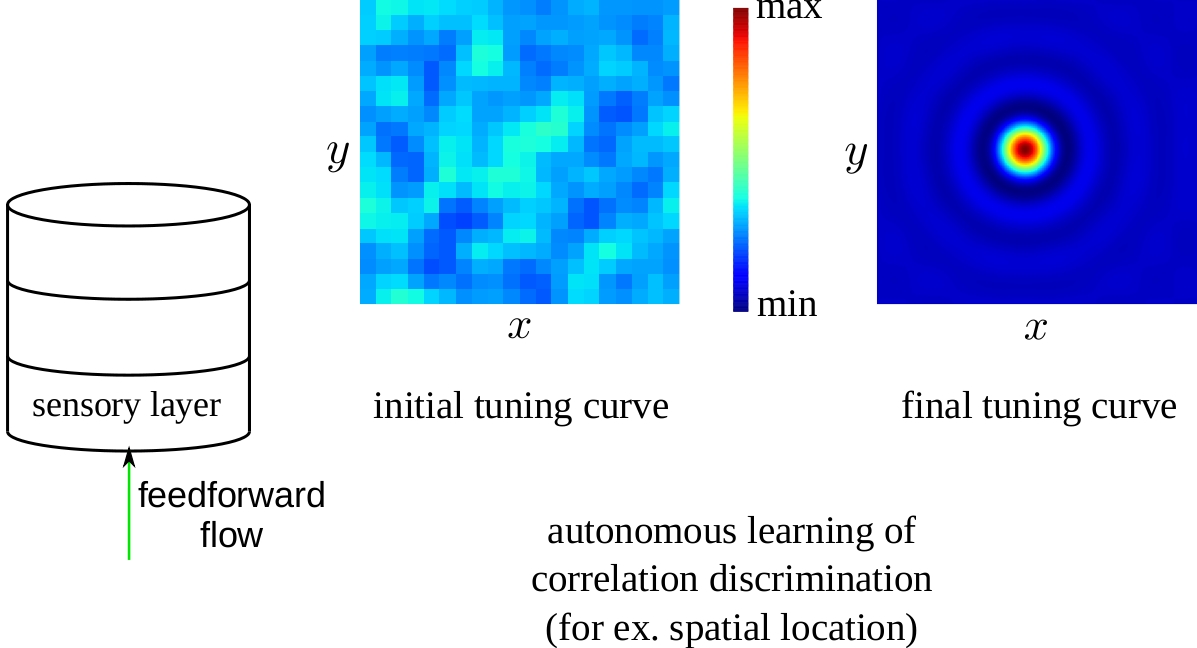
-
Generalizing learned monomodal correlations
=> Modal maps self-organization: sensory layers of two close columns have close discriminations
- Sensory layer sampling

- Winner takes most competition (neural fields [2])

- Sensory/perceptive interaction leads to discriminations self-organization (modulated BCM learning rule [3])
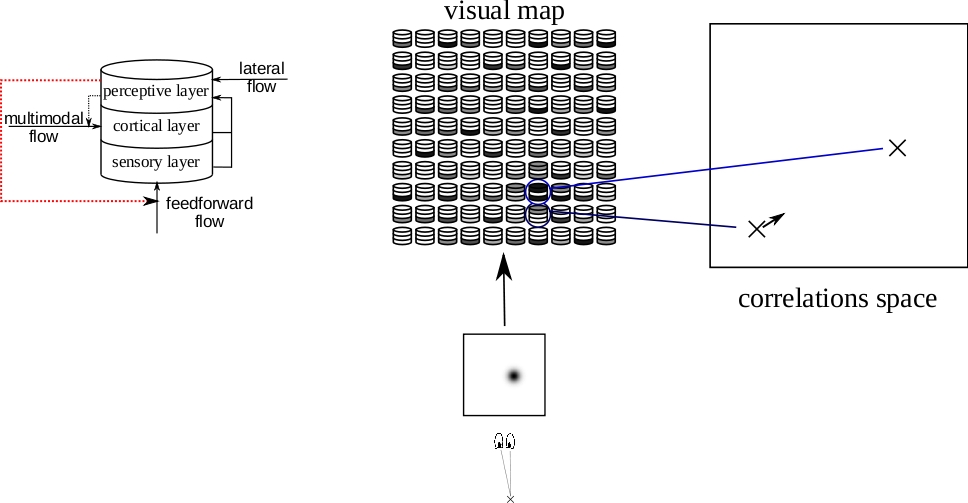
-
Sampling and generalizing multimodal correlations
=> Modal maps joint self-organization: sensory layers of two columns located at the same place in two different maps discriminate monomodal correlations that belong to one multimodal correlation
- Sensory layer monomodal sampling

- Winner takes most monomodal competition
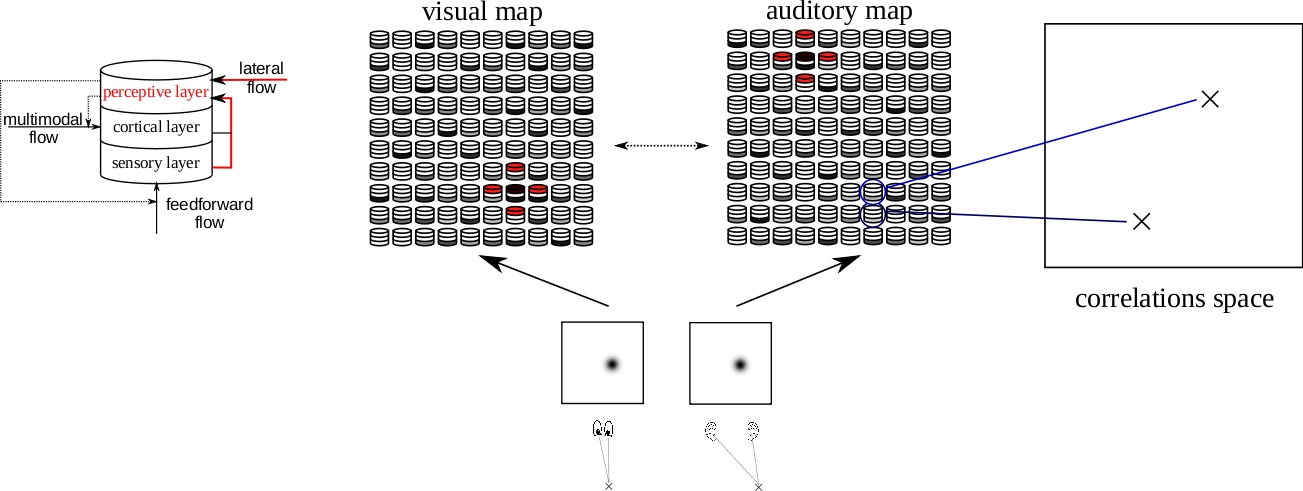
- Multimodal influence of monomodal perceptions (topographic connections)
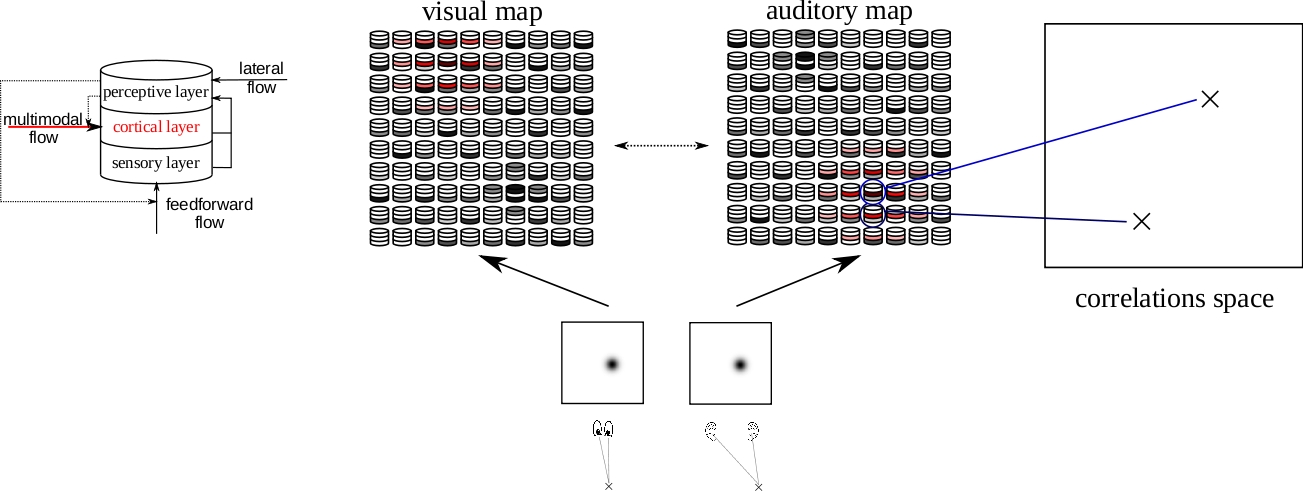
- Emergence of a consistent multimodal perception (resonance)
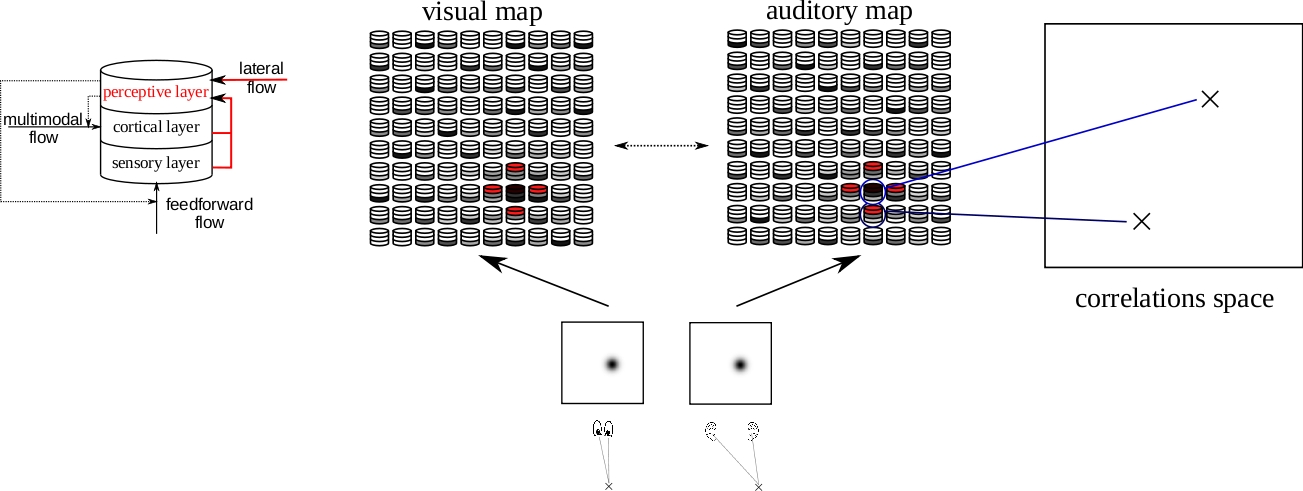
- Sensory, cortical and perceptive interaction leads to discriminations joint self-organization (BCMu learning rule [4])
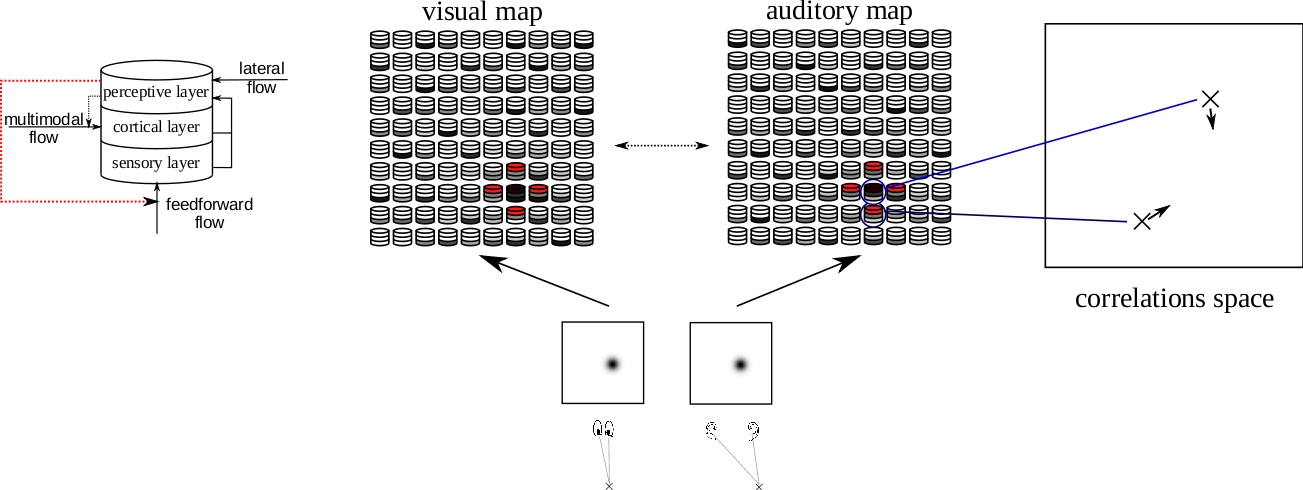
[1] Bienenstock E., Cooper L. et Munro, P. (1982) Theory for the development of neuron selectivity : orientation specificity and binocular interaction in visual cortex. Journal of Neuroscience
[2] Amari S. (1977). Dynamics of pattern formation in lateral-inhibition type neural fields. Biological Cybernetics
[3] Girod T. (2010) Un modèle d'apprentissage multimodal pour un substrat distribué d'inspiration corticale. PhD thesis
[4] Lefort M, Boniface Y. et Girau B. (2011) Unlearning in the BCM learning rule for plastic self-organization in a multi-modal architecture. ICANN
Last update: 17/10/23








